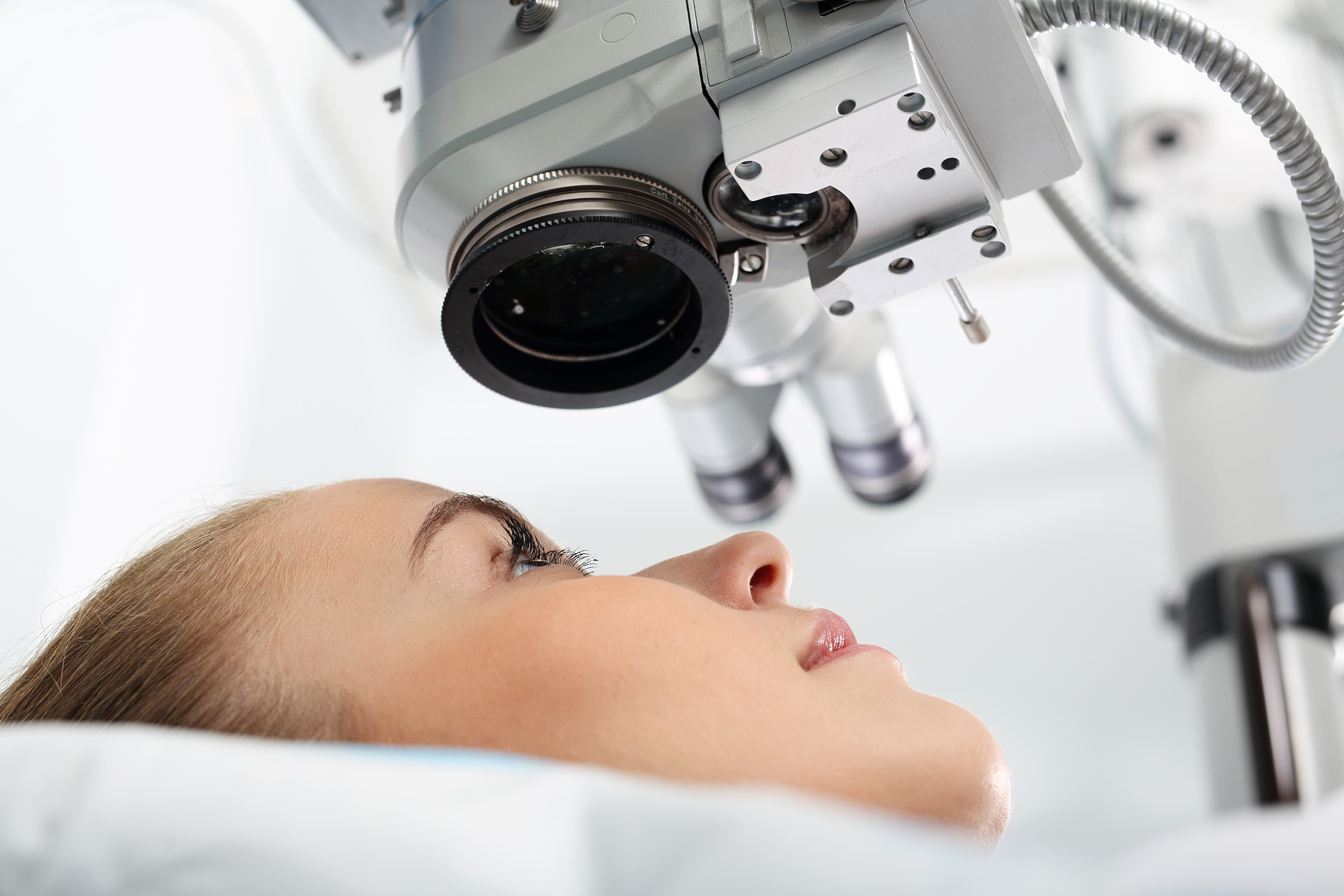


A cataract is a progressive clouding of the transparent lens located inside the eye. This phenomenon decreases the amount and quality of light that passes through the eye and which is necessary for vision. Vision becomes blurred, the perception of colours becomes dull and sensitivity to light increases. Cataracts are one of the leading causes of visual impairment in the world and are considered a real public health issue. They generally occur in people over 60 years of age but can also affect young children (congenital cataract). In the initial development of a cataract, the patients do not realize that they are suffering from the condition, because the effects on vision are minimal or absent. As the lens becomes more clouded, the symptoms worsen, causing significant deterioration of vision that can lead to blindness.
The only effective treatment for cataracts is surgery. Cataract surgery is the most common surgery performed across all surgical specialties. Cataracts are a very common cause of declining vision. Significant progress has been made in the treatment of this condition in recent years and most people who suffer from this disorder can now expect to fully, or at least to a large extent, recover their eyesight. During surgery on the eye, the surgeon removes the cloudy lens and replaces it with a transparent intraocular lens that has an excellent optical precision. There are three natural lens replacement options: a monofocal, bifocal or trifocal intraocular lens. However, only the trifocal technology will allow you to live spectacle free.
Mr Hegde performs majority of cataract surgery using high frequency ultrasound probe under local anaesthesia. The procedure is called Phacoemulsification. He uses most advanced technology to calculate your lens power and implant an artificial lens which is made of plastic.It is a pain free procedure and takes approximately 20 to 30 minutes.

Cataract surgery is a day case procedure. It is pain free after the operation. You will be given an eye shield for protection, especially at night time. Post operative eye drops will be issued to you before discharge and should be used for 4 weeks. Mr Hegde will usually evaluate you 2-4 weeks post surgery. You will be advised to make an appointment with your optician 6 weeks after the operation to get an updated refraction and glasses.
Mr Hegde routinely uses array of premium interocular (IOL) lenses. He has vast experience in monofocal, multifocal and toric IOL implants. The choice of lens implants, its merits will be discussed with you during your consultation.
Mr Hegde routinely uses array of premium interocular (IOL) lenses. He has vast experience in monofocal, multifocal and toric IOL implants. The choice of lens implants, its merits will be discussed with you during your consultation.
Used for decades in cataract surgery, intraocular lenses are now an effective solution that is particularly suited to the most severe eyesight problems. Implanted inside the eye during surgery, the intraocular lenses correct the vision in the same way as glasses or contact lenses. The intraocular lenses used today offer the latest technologies:
Corrects far vision.
The monofocal lens has a single focal point, i.e. it allows the operated eye to see well at a single distance. It works well for people who don’t mind wearing glasses or who have an abnormality in one or both eyes.
Your optometrist or ophthalmologist can offer you various correction solutions:
1. Both eyes corrected for distance vision
This solution will provide you with the best quality vision for tasks requiring distance vision, such as driving during the day or night, watching TV, going to the movies or doing sports. However, you must wear glasses to correct your vision at an intermediate and near distance for reading a book, working on a computer, reading the time on your watch etc. You may have to wear progressive glasses even if you do not need to wear them to see at a distance.
2. Monovision
You can choose to correct one eye (dominant eye) for distance vision and the other (non-dominant eye) for near vision. This method provides an alternative that allows you to reduce your dependence on corrective glasses. The monovision approach requires an ability to adapt, because it implies a compromise in the quality of vision:

Corrects near and far vision.
The bifocal intraocular lens divides the light into two separate focal points: one for distance vision and another for near vision. The lens therefore corrects near and distance vision but provides limited intermediate vision. Intermediate vision is important for many everyday tasks, such as working on a computer, cooking or inserting a key into a lock.
With this type of lens very little light is allocated for intermediate vision. Therefore, your vision is less effective when objects are situated at arm's reach (intermediate distance). Thus, glasses may be required for certain tasks, such as working on a computer.
The lens provides good vision at a short distance (32 to 39 cm), but the quality of vision may vary depending on the lighting. If necessary, it is recommended that a desk lamp be used for reading.

Corrects near, far and intermediate vision.
Trifocal technology is used in a surgical procedure to replace the human lens (the eye's lens) with an artificial (or intraocular) lens.
The trifocal intraocular lens corrects your distance, near and intermediate vision. Unlike monofocal and bifocal lenses that correct one or two zones of vision, a trifocal intraocular lens provides optimal vision at all distances without the need for glasses.
The trifocal intraocular lens has three different focal points offering a full extended range of vision. This technology is designed to not only provide good vision at short (40 cm) and long distances, but also at an intermediate distance (60-70 cm). This intermediate distance is increasingly used for instance, for working on a computer, tablet or smartphone.
The trifocal intraocular lens is a solution for patients with cataracts who do not want to wear glasses and also for younger presbyopic patients who are still professionally active and work a lot on a computer or tablet.
Apart from treating cataracts and presbyopia, the trifocal lens can correct astigmatism, myopia or hyperopia in a single procedure, which eliminates the need to wear glasses.
The trifocal intraocular lens provides optimal vision at all distances regardless of your lifestyle without the need for glasses.

No. But you can develop thickening of the membrane which supports the new intraocular lens implant. This may develop up to 10% of patients. This is easily treated by YAG laser. This is a quick and painless out patient procedure.